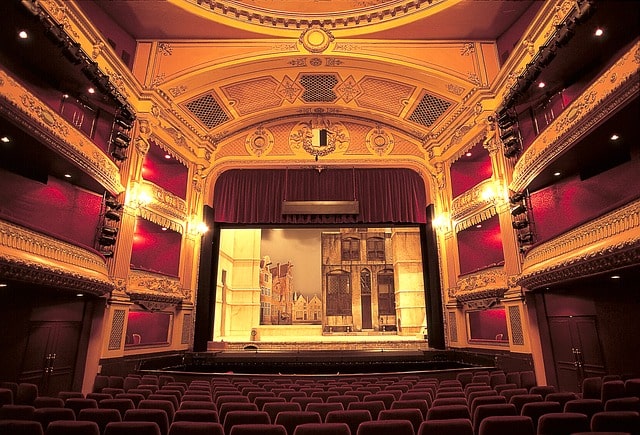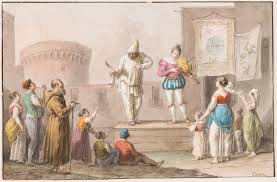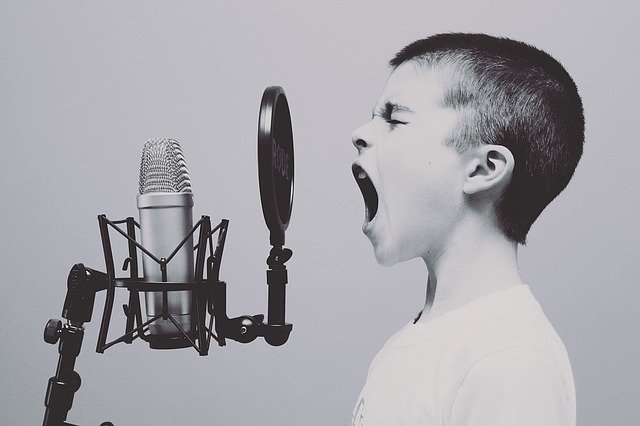Opera: what it is, meaning, opera genres, elements, structure and origins
Contents
What is the subgenre of opera?
Although there has been confusion over time about the classification of opera as a type of artistic expression, it is important to clarify that it is part of literature, specifically, of the literary genres, in the dramatic genre, since it is a type of work that although it contains musical elements, it is essentially based on a dramatic representation in which the actors express their feelings, ideas and thoughts using singing as a medium and in the company of an orchestra.
On the other hand, opera has become one of the most important and integral representations of the artistic world, since it includes a great variety of aspects that reveal human feelings and thoughts through the characters of a story.
Meaning of the subgenre opera
The term comes from the Italian opera, which refers to -musical work-, which, as its name indicates, is a type of theatrical composition that includes music on stage for the representation mixing musical instruments and singing. The representations will take place in opera houses. Its importance takes place within the tradition of classical music that is part of the European continent.
Definition of the sub-genre opera
It is possible to define opera as a type of work that includes poetry, music and singing, in which an action is represented with the intention of delighting the ear and the imagination of the public, either from a vulgar or illustrious action, so that it is possible to work both comedy and tragedy within a work or also known as opera piece.

In addition to the performers and due to the type of artistic elements included in the opera, it is important to take into account that the following are also involved: the librettist, the musical composer, the scenery and costume personnel, and the performers who will be the singers who will be the protagonists of the work and the accompanying singers.
History and origin of opera
Since 1650, the term “opera” has been used to designate a type or genre of theatrical music in which the actions on stage are accompanied by musical instruments and singing, and in some cases ornaments, in which the performers use styles of expression designed for this type of work. However, there are others who claim that the origin of opera dates back to the 1570s and 1580s in Florence, where artists and teachers gathered around Count Giovanni Bardi, where they received the name of Camerata Florentina. It was a group that took up the dramatic art of Ancient Greece, specifically: the Greek Tragedy.
In this activity was one of the most important composers and theorists, such as Vivencio Galilei, father of the astronomer Galileo Galilei, since he published ancient Greek music, as well as Giovanni Caccini, also a composer and singer. By 1590 other important composers and poets began to be recognized, such as Ottavio Rinuccini and Jacopo Peri, who composed a pastoral drama called II Pastor Fido, translated in Spanish as The Faithful Shepherd, who met in the palace of Count Jacopo Corsi, a merchant. It is noteworthy that even with the spirit of retaking the music and drama of the ancient Greeks, the first compositions gave rise to pastoral works.
Later on, Dafne, the first representation that was considered an opera, was released, starting this type of representations with the union of Jacopo Peri, Jacopo Corsi and Ottavio Rinuccini, however, only the text of the work has been preserved. This is how, little by little, another series of compositions began to appear, which were initially used for the celebration, as in the case of the marriage of Henry Iv of France and Maria de Medici, whose moment had the representation of the work called Eurydice by Rinuccini and Peri. Later, names such as Claudio Monteverdi, the main composer who would lay the foundations of opera, became known.
Characteristics of opera
Throughout the history of opera, a great variety of elements have been incorporated that have enriched the staging, as well as strengthened its main objectives according to the work and its particularity in general, distinguishing it from other types of artistic compositions. These are its most important characteristics:
Form of elaboration
A fundamental aspect to know about opera is that its writing from beginning to end is elaborated from the collaborations and dialogues between the librettist and the composer.
Place of performance
The performance of an opera is usually held in an opera house, which has the presence of a small musical ensemble or the orchestra itself, either of which is directed by the corresponding conductor.
Singing characteristics
It must be taken into account that there is no specific number of people to sing an opera, but it can be sung by duos, trios, quartets or larger formations that sing the work, even including choirs.
Elements of an opera
Opera is a type of work that implements several artistic fields for its composition, so it is important to highlight what these are and to this extent, how it counts on them for the construction of the final composition. These are:
Literature
As part of the literary genres as a subgenre, the opera essentially links literature in its composition, using it for the construction of the entire staging. It is essential that this composition is made in written form in the text that receives the name of libretto, where the story of the opera is found. The creation of the libretto requires the collaborative participation of a writer or poet and the composer, who is also in charge of the other artistic elements.
Music
Within this field, we highlight the frequent use of live musical instruments given by an orchestra, although it can also be composed by a choir or soloists directed respectively. To this is added the presence of poetry, which is read by libretto to be sung.
Theater
The use of the performing arts is key, since this type of work is based on the theatrical representation of expressions of feelings, thoughts, ideas and conversations that are manifested not only through the voice, but also through the body, costumes and, in general, the staging from the interpretation.
Dance
Many opera works include the use of dance, especially ballet, because as part of the performing arts it creates a harmonious environment that is sympathetic to the company of musical instruments and singing, creating an atmosphere much more nourished by artistic expressions.
Plastic arts
This type of art, within the representation of the opera participates in the creation of painting, but also in the architecture for the creation of the spaces within the stage, the decoration and in general, all the visual material that is part of the staging, which define the time and place in which the events occur.
Other elements that are part of the representation of the opera include other complementary aspects for the scene, such as scenic effects, lighting and its variants within the stage, the costumes of each of the characters according to their role and the particular makeup.

Genres of opera
It must be recognized that the creation of different types or genres within opera is fundamentally due to the creation of different librettos, as well as other musical compositions, so that the genres are the product of these diverse creations that relate propositions from the time and context, the specific theme of each work, the particular intention of the poet as well as the composers.
The genres of opera are:
Operetta
It is a form in which the opera is presented in a light, amusing and entertaining way, in which a spoken dialogue, dances and frequent songs appear. It refers, in its beginnings, to a type of work of lesser length than an opera. Although it stood out for a long time, it fell into disuse around 1800. With its fall, the operetta will give rise to a variety of other national styles, in addition to modern musical theater.
Dramma per musica
This genre refers to the opera created in Italy around the 17th century. It is a modern genre that renews theatrical representation with a uniform aspect that enacts the drama from the stories of everyday life that begin to be expressed through a voice that is accompanied by music, this represented by an orchestra on stage. In general, it gathers content of human events.
Literary opera
This term is used to distinguish all types of works in which the libretto is used in an obligatory way, as the theatrical representation requires it and where the modifications that the text undergoes are really very small.
Jocular drama
In this genre a common opera is developed from the XVIII century, which includes the description of the text using the scene technique of the great buffo as the part of more tension within the representation that reaches the end of the acts that are presented.
Farce
It is a genre that spread during the late eighteenth century that linked an opera whose character was buffo and lasted only one act, intended for smaller theaters, especially those of scarce resources that lacks chorus and scene changes, carries a fast pace with characters closer to the immediate reality.
Grand opéra
It is a genre of French origin that is based on a representation of greater magnitude in which there is the presence of a large number of characters on stage representing, often, historical themes, the costumes are sumptuous, the sound effects are great as well as the orchestra with which they count. The Grand Opéra can be divided into up to five acts, including ballet pieces. This genre was one of the most important of the 19th century, especially in its beginnings, since it fell into disuse after the First World War.
Opera structure
Although in many occasions it will depend on the length of the particular work and even the genre, if it is to be managed, the following structure should be taken into account:
Opening of the opera
This is the initial part of the performance, which is usually left to the interpretation of the live orchestra on stage. For this moment, the curtain is often left closed and the instruments start playing from there. This is followed by either the opera or a single act, made up of scenes.
Aria
Refers to all those parts in which the sung parts are presented, which requires an interpretation presented by a soloist, or with the accompaniment of a choir, however the orchestra is always present with the singing voice.
Recitative
This part refers in particular to the approach of the work in the discursive part, since in this section the initial objective of the work is made evident to the audience, which is done very quickly. A part is given over to the choir and orchestra for their participation in this section.
Choir
The chorus, or chorus, is composed of a large group of characterized characters who sing together essential fragments of the work.
Interludes
This section is used to present instrumental parts interspersed between the fragments proposed by the chorus.
Acts
These are finally the spaces of time and place in which the opera is divided, which are called scenes.
Classification of the voice in the opera
In this type of work, the classification of the voice is vital for the performance, since both the singers and the roles they play must be properly organized according to aspects of the voice such as timbre, tessitura, power, agility, range, etc. Accordingly, this classification is made as follows based on vocal range: men; bass, bass-baritone, baritone, tenor and countertenor range, and women in; contralto, mezzo-soprano and finally soprano.
The classification is not a determinant specifically, since there are males who can reach a female vocal range or register, which receives the term countertenor or sopranist.
How to write an opera?
Taking into account all the above information, we will see below how to start writing such a composition:
Knowing the components
Although it is an aspect that we have seen throughout this section, it is crucial that when you sit down to write a work of this type, you take up and remember all the components necessary for the creation, since this is what will allow us to follow the structure of the opera with all its vital elements.
Identify the theme
The golden question for this type of creation is the following: “What do I want to say? The intention of the author, librettist or composer is one of the most important aspects of the creation, since the individual must start from variants such as his own desires, joys, disappointments, sorrows, fears, wishes, frustrations, emotions and in general, thoughts that will be exposed in the process.
Build the characters
Once you have defined what you want to say, it is time to identify and build your characters. This first group of characters should have a specific role according to the era of the story you are going to tell, and you can develop their plot lines within the composition. According to the construction of the profile of each character, it is convenient to decide their texts, poems and characterization taking into account the particular biography, the emotions that are developed in relation to the individual intensity, among others that will be a great tool for the interpreters.
Create collectively
Due to the diverse presence of arts that compose the dramatic work that represents an opera, it is necessary to reiterate that the composition of a work like this one implies fundamentally the presence and the collective work hand in hand with composers, librettists, and artists to reach an integral composition. That is why it is key to count on the ideas and perspectives of all the parts, it is a collective work in which the knowledge of the other artists enters in participation within the script and the scene itself.
All the elements are very important for the final performance, as it will allow the performers to know all the tools available to them on stage and thus create their characters from it to bring them to life.

Authors and most important works
The most important work for being the first considered specifically as this type of representations was Dafne, who in its light highlighted the names of composers who begin to consolidate in the subgenre, such as Jacopo Peri, Ottavio Rinuccini and Jacopo Corsi.
As well as Claudio Monteverdi who lays the first foundations of opera, other composers appear to the light, among which we find Richard Wagner, Giuseppe Verdi, Richard Strauss, Claude Debussy, Vincenzo Bellini, Ludwig van Beethoven, Wolfgang Mozart, Jean Baptiste Lully and Alessandro Scarlatti. In addition, singers such as: Anna Renzi, Faustina Bordoni, Francesca Cuzzoni, Joseph Legros, María Malibrán, Enrico Caruso, Kirsten Flagstad, Feodor Chaliapin, Miguel Fleta, Fria Leider, Giuseppe Martinelli, Lotte Lehmann, Melico Salazar, María Jeritza, Gonzalo Castellón, María Callas, Renata Tebaldi, among many others.
Example of an opera
The following is an excerpt from the work Eurydice, written by Jacopo Peri, one of the most important works in the history of opera:
ORPHEUS
Gioite al canto mio, selve frondose!
Gioite amati colli e d’ogni intorno
Ecco rimbombi dalle valli ascose.
Risorto è il mio bel sol, di raggi adorno
E coi begli occhi onde fa scorno a Delo
Raddoppia foco a l’alme e luce al giorno
E fa servi d’Amor la terra e il cielo
Rejoice with my song, lush forests!
Rejoice, beloved hills!
Echoes echo through the hidden valleys!
Adorned is my beautiful sun by his rays,
and with his eyes, with which he laughs at Delos,
He redoubles the fire to the soul and the light to the day
and makes servants of love, earth and sky
